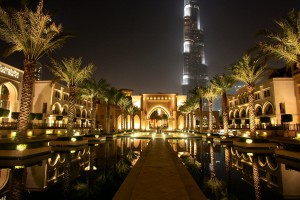By Kwon Mee-yoo www.koreatimes.co.kr
The blaze in the 38-story apartment complex in Haeundae, Busan last Friday set off multiple alarm bells that high-rise buildings are essentially defenseless against fires, experts said Sunday.
 Fortunately, no casualties were reported as most residents were evacuated soon after the fire broke out at 11:30 a.m. in a cleaners’ room on the fourth floor of the Wooshin Golden Suites. However, if the fire had broken out at night while residents were asleep, it could have claimed a lot of lives, they said.
Fortunately, no casualties were reported as most residents were evacuated soon after the fire broke out at 11:30 a.m. in a cleaners’ room on the fourth floor of the Wooshin Golden Suites. However, if the fire had broken out at night while residents were asleep, it could have claimed a lot of lives, they said.
High-rise residential buildings lack essential safety features as materials used in their construction are far from fire resistant, and safety regulations here are still too lax.
The fire at the apartment complex in the nation’s largest port city laid bare all these risks that could turn living in plush high-rise apartment buildings into a ticket for a fiery death if not addressed appropriately by the authorities, they said.
The outer wall of the Wooshin complex was decorated with polyethylene panels covered with aluminum and used polystyrene for heat insulation ㅡ both materials that are vulnerable to fire.
However, there are no regulations governing the materials used in covering exteriors.
The Ministry of Land, Transport and Maritime Affairs created a new article in the Building Act last year, mandating only nonflammable materials for the exterior of buildings, and ordinances will be enforced beginning later this year. But the law does not apply to buildings already in construction or built.
Kwon Young-duck of the Seoul Development Institute said, “New apartment buildings do not have verandas and their exteriors are covered with material that is highly flammable. Verandas can block fire and provide shelter.”
He said the U.S., Japan and other developed nations do not allow residents to demolish verandas for the expansion of their interior space.
Experts also pointed out that ladders which can extend up to 45 meters or reach the top of a 15-story building are useless if a fire breaks out on higher floors. There are 120 31-story or higher apartment complexes in Seoul alone.
The United States has relatively strict rules on fire prevention and emergency evacuation systems for skyscrapers. The National Fire Codes of the U.S. is composed of some 280 articles covering all aspects of fire, firefighting facilities, human security and electricity among others.
For instance, New York has designated guidelines for the material used in floor and ceiling construction as well as for elevators, pipes and the minimum number of disaster prevention officials according to the size of the building.
As it is difficult for firefighters to reach the upper stories, they have firm regulations on the installment of automatic sprinklers and smoke detectors.
The 828-meter-high Burj Khalifa in Dubai, United Arab Emirates (UAE), currently the highest skyscraper in the world, also has state-of-the-art disaster prevention measures.
The 160-story building has four safety zones on the 42nd, 75th, 111th and 138th floors. These shelters can accommodate up to 6,500 people and are designed to last for two hours after a fire has broken out.
It is also directly connected to the fire station, along with other 21-story or higher buildings, so the fire department is alerted by a direct report from the facilities.
Japan frequently conducts fire drills to minimize damage if a fire occurs and buildings also have anti-disaster centers.












